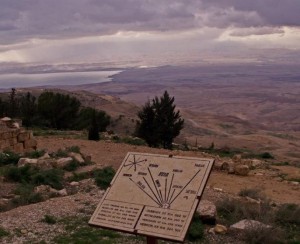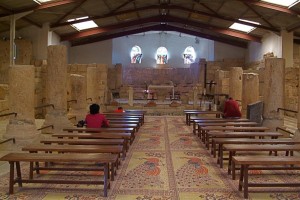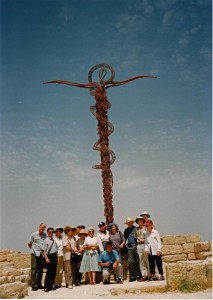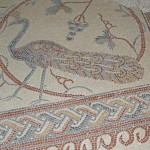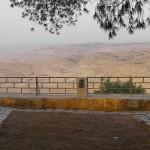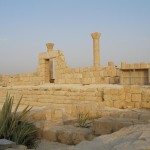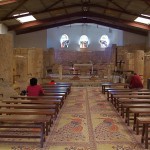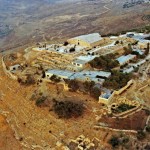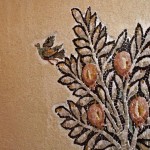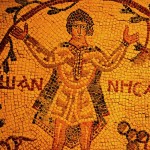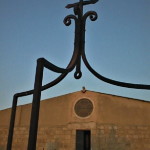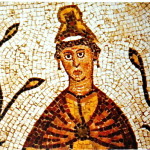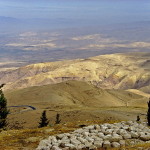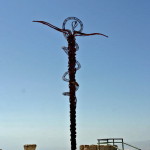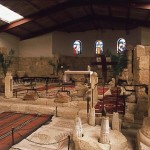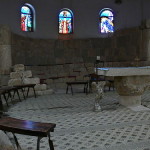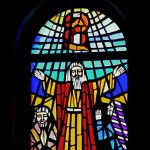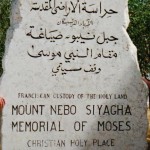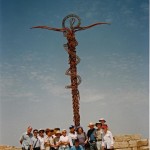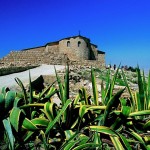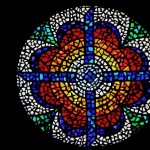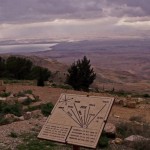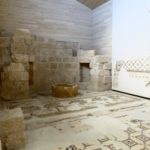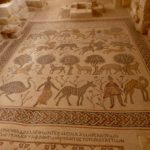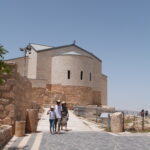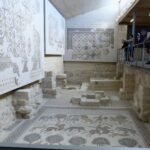Jordan
After 40 years leading the headstrong Israelites in the desert, Moses stood on the windswept summit of Mount Nebo and viewed the Promised Land of Canaan — after having been told by God “you shall not cross over there”.
On a clear day, today’s pilgrims can see the panorama Moses viewed: The Dead Sea, the Jordan River valley, Jericho, Bethlehem and the distant hills of Jerusalem.
As Deuteronomy 34:5-6 recounts, Moses died there in the land of Moab “but no one knows his burial place to this day”. Moses did, however, eventually reach the Promised Land. He and Elijah were seen with Jesus at the latter’s Transfiguration (Luke 9:28-36).
Mount Nebo is now in western Jordan. At 820 metres high, it looks down 1220 metres on the nearby Dead Sea (which is about 400 metres below sea level).
Early Christians from Jerusalem made it a place of pilgrimage. In the 3rd or 4th century monks from Egypt built a small church on one of its peaks, Siyagha (a name meaning monastery), to commemorate the end of Moses’ life. By the end of the 4th century, an empty “tomb of Moses” was being shown to pilgrims on the mountain.
Pilgrim’s journal assisted excavation
The monks’ church was expanded in the 5th and 6th centuries into a large basilica with a stunning collection of Byzantine mosaics and an elaborate baptistry. Though little remains of the early buildings, the mosaics can be seen inside the present-day shrine.
The main mosaic, about 9 metres by 3 metres, depicts monastic wine-making, hunters and various animals.
In the 1930s the Mount Nebo site was excavated, thanks largely to a description of it in the journal of an early woman pilgrim, Egeria, in AD 394. Six tombs were also found, hollowed into the rock beneath the basilica’s mosaic floor.
Outside the present-day shrine stands an enigmatic serpentine cross, the Brazen Serpent Monument. Created by Italian artist Giovanni Fantoni, it imaginatively merges the life-saving bronze serpent set up by Moses into the desert (Numbers 21:4-9) and the cross upon which Jesus was crucified.
Village with several churches
A less well-known site is at Khirbet al-Mukhayyat, a small town to the east, between Mount Nebo and Madaba. Here are the remains of the village of Nebo, mentioned twice in the Bible, where villagers in the 6th and 7th centuries constructed several churches.
On the highest point of the acropolis was the 6th-century Church of St George. The best-preserved floor mosaics are in the Church of Sts Lot and Procopius, who were venerated as martyrs.
In Scripture:
Moses on Mount Nebo: Deuteronomy 34:1-8
Transfiguration of Jesus: Luke 9:28-36
Administered by: Franciscan Custody of the Holy Land
Tel.: 962-5-325-2938
Open: 8am-5pm (4pm Oct-Mar)
- Peacock mosaic on Mount Nebo (Seetheholyland.net)
- Franciscan symbol on Mount Nebo (Seetheholyland.net)
- Remains on Mount Nebo (Seetheholyland.net)
- Floor mosaics in Mount Nebo Church (© Visitpalestine.ps)
- Mount Nebo from the air (© Custodia Terrae Sanctae)
- Detail of mosaic at Mount Nebo (© Custodia Terrae Sanctae)
- Mosaic at Mount Nebo (© Visitpalestine.ps)
- Facade of the Mount Nebo Church (© Custodia Terrae Sanctae)
- Detail of mosaic at Mount Nebo (© Custodia Terrae Sanctae)
- View from Mount Nebo (Effi Schweizer)
- Serpentine cross sculpture at Mount Nebo (David Niblack)
- Interior of the Mount Nebo Church (© Visitpalestine.ps)
- Inside the Mount Nebo Church (Birgitta Seegers)
- Stained-glass window of Moses at Mount Nebo (© Visitpalestine.ps)
- Stone stele at the entrance to the Mount Nebo site
- Pilgrims at Mount Nebo’s serpentine cross sculpture (Seetheholyland.net)
- Church on top of Mount Nebo (© Custodia Terrae Sanctae)
- Stained-glass window at Mount Nebo (© Visitpalestine.ps)
- View from Mount Nebo (© Custodia Terrae Sanctae)
- Baptistry in Mt Nebo church (Seetheholyland.net)
- Mosaic dating from 425 in Arabian calendar (AD 531) on floor of old Mt Nebo baptistry (Seetheholyland.net)
- The church on Mt Nebo (Seetheholyland.net)
- Rediscovered mosaics on display at Mt Nebo (Seetheholyland.net)
References
Freeman-Grenville, G. S. P.: The Holy Land: A Pilgrim’s Guide to Israel, Jordan and the Sinai (Continuum Publishing, 1996)
Gonen, Rivka: Biblical Holy Places: An illustrated guide (Collier Macmillan, 1987)
Inman, Nick, and McDonald, Ferdie (eds): Jerusalem & the Holy Land (Eyewitness Travel Guide, Dorling Kindersley, 2007)
Piccirillo, M., Alliata, E. (ed.): Mount Nebo. New Archaeological Excavations 1967-1997 (Franciscan Printing Press, 1998)
External links
Mount Nebo (Custodia Terrae Sanctae)

